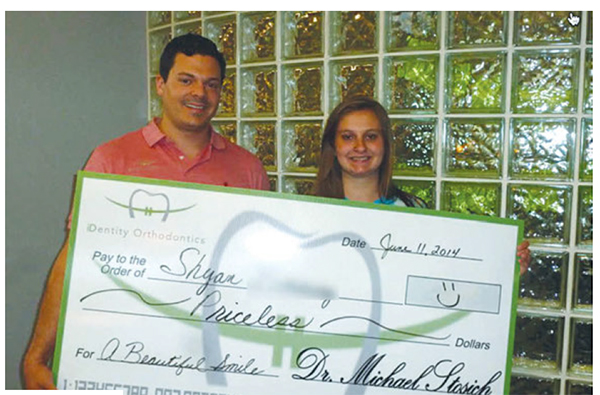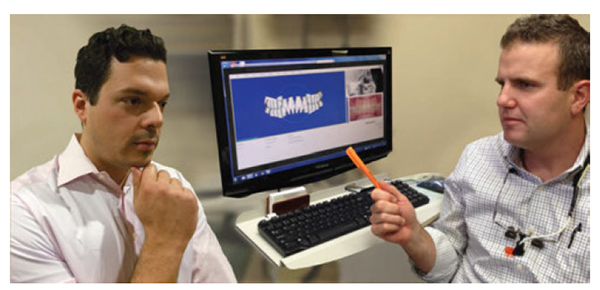
 What can you tell us about your background?
What can you tell us about your background?
First, I realized that I thrive on the study of biomechanics. From college to graduate school, I delved into the study of bio-engineering and biomechanics because it offered a unique opportunity to express my fascination with the physics of movements. I also discovered there is much to be learned in the field of bioengineering as it relates to the study of dentistry. Thereafter, I launched my research to study methods regarding how dental implants can better integrate using stem cell sources. It helped me gain an understanding into how mechanical stress can contribute to tissue integration. In addition, I also pursued research in soft-tissue engineering. Using one’s own stem cells, we set out to discover ways to regenerate a defective tissue part. The motivation for this research was in part from its wide-ranging and critical implications to current clinical practices, including that of orthodontics. From my courses in graduate study at University of Illinois and Columbia University, I was well aware of the many challenges facing clinicians who are treating patients with facial deformities. The findings from this project drew excitement among reconstructive clinicians, and it was very rewarding to witness my research being the foundation for further investigations. I continued to pursue this question specifically to craniofacial applications at The Children’s Hospital of Philadelphia.

Why did you decide to focus on orthodontics?
I am drawn to orthodontics because of its ability to make life-changing and lifelong differences. While the cosmetic changes are most visible, treatment truly translates to multiple facets: function, self-confidence, and overall harmony of one’s appearance. Orthodontics is a rarity among the specialties in this regard, and my conviction in this pursuit inspires me to continue the betterment of the specialty.
How long have you been practicing, and what systems do you use?
I’ve been in private practice since 2011. I utilize image-guided orthodontics and 3D treatment planning to simulate optimal treatment outcomes.
What training have you undertaken?
I have a passion for lifelong learning. I have undertaken extensive training in 3D image-guided orthodontics, suresmile®, Lingual Orthodontics, and Invisalign®. My area of expertise is in robotically assisted orthodontics. My training has provided me with the foundation for treating the gamut of patients — from the routine to the most complex. Additionally, a strong tenet of all my background training, especially learned in the research setting, is the importance of collaborative teamwork. I have always worked on collaborative teams, and that’s exactly what I continue to do.
Who has inspired you?
I have been inspired by many outstanding professionals throughout my training. In research, Dr. Hyun-Duck Nah is a first-rate scientist who taught me much. Clinically, I’m inspired most by Dr. Rohit Sachdeva, whom I sincerely believe is the orthodontist of our time, and who has done much for orthodontics.
What is the most satisfying aspect of your practice?
I am most rewarded and gratified by the changes I see in my patients’ faces and ultimately in the quality of their lives. I support my patients’ dreams in any way I can through scholarships and pay-it-forward models.
Professionally, what are you most proud of?
I’m proud to be the orthodontic director of the Craniofacial Anomalies and Cleft Lip/Palate Team at the prestigious University of Chicago Medicine and Comer Children’s Hospital. It’s extremely rewarding to be working with some of the most difficult cases in orthodontics and craniofacial deformities. The changes in these children through the interdisciplinary approach and treatment we yield are phenomenal. I also am involved in the University’s craniofacial research lab where I continue my studies in bone biology and orthodontic/craniofacial research.
I’m also very proud of the amount of charitable work I have been involved in. It’s a central tenet in my practice that we must pay it forward to help those without the means to seek orthodontic care through our charitable programs, including Smiles for Service, Smiles Change Lives®, and Fresh Start Caring for Kids Foundation.
What do you think is unique about your practice?
We strive to be a patient-centered practice in every sense of the word. I spend extensive time on each patient’s care plan with 3D treatment simulations and analytic study, which results in more efficient therapeutics and an easier time in braces. We treat not just the malocclusion, but the whole person. Being a positive influence and a fun, safe place for the child (or adult) to visit is vital. I also believe in always being available for the general dentists who have entrusted me with their patients. Driving an orthodontic treatment plan in concert with their periodontal and restorative goals is integral in providing optimal and continuous patient care.
What has been your biggest challenge?
My biggest challenge is balancing work and family. With two practices and the university, my time is stretched thin. But it’s always such a joy to come home to my new baby and wife, who have been such an amazing source of comfort and inspiration.
What would you have become if you had not become a dentist?
I would have stayed a biomedical engineer. It was rewarding and stimulating. But I’m so glad I became an orthodontist; I need the patient interaction.
What is the future of orthodontics and dentistry?
I feel the future of orthodontics will be increased collaboration with both patients and dentists. Patients today are more educated than ever before, and having them play a role in the care cycle can yield more fruitful treatment outcomes. Technology, of course, continues to evolve, but we must never be overtaken by treatment systems or the latest gadget without doing due diligence supported by science.
What are your top tips for maintaining a successful practice?
Maintaining a successful practice is hard work, one that requires constant nurturing. The single most important thing I do is treating my patients like family. Looking out for their best interests is fundamental. With all the financial pressures these days, you can never, ever go wrong by doing what’s right for your patient family.
What advice would you give to budding orthodontists?
Orthodontics is a wonderful field, and I truly believe I have the best job in the world. The dynamic continues to change, with increased competition and self-proclaimed miracle systems flooding the market. I’d say, stay the course, stick to an evidenced-based practice, and be patient. Good things come to those that work hard and for the right reasons.
What are your hobbies, and what do you do in your spare time?
I enjoy running with my Old English Bulldog, rock climbing, and traveling with my family.
Stay Relevant With Orthodontic Practice US
Join our email list for CE courses and webinars, articles and mores


